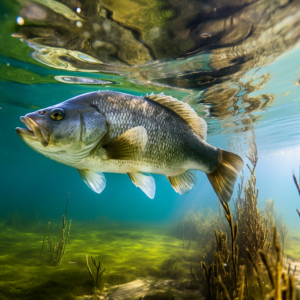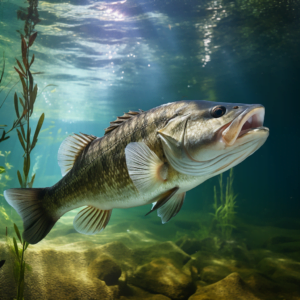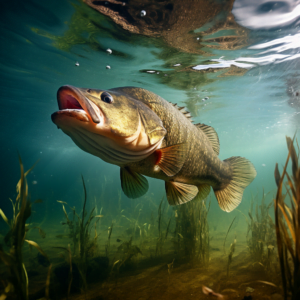So, you’re curious about largemouth bass, huh? Well, let me tell you, these fish are quite the topic of discussion. Now, you might be wondering if largemouth bass are only found in the United States. Well, the answer might surprise you! While they are indeed native to North America, specifically the eastern and central parts of the United States, they have also been introduced to various other countries around the world. Isn’t that fascinating?
Now, let’s dive deeper into the global distribution of largemouth bass. Thanks to their popularity among anglers and sport fishers, largemouth bass have been introduced to many other countries for recreational purposes. Countries such as Canada, Mexico, Australia, Japan, South Africa, and even parts of Europe have seen successful introductions of these feisty fish. They thrive in both freshwater and brackish water environments, making them adaptable to a variety of habitats. In some cases, they have even become invasive species, outcompeting native fish and disrupting local ecosystems.
So, in short, no, largemouth bass are not only found in the US. They have spread their fins far and wide across the globe. In the upcoming article, we’ll explore the reasons behind their global distribution, the impact they have on local ecosystems, and some interesting facts about this popular game fish. Get ready to reel in some knowledge about the worldwide domain of largemouth bass!
Exploring the Global Distribution of Largemouth Bass
Largemouth bass (Micropterus salmoides) are a popular freshwater fish known for their large mouths and aggressive behavior. They are native to North America and have become a popular game fish in the United States. However, largemouth bass can also be found in other parts of the world due to introductions and establishments outside their native range. In this article, we will explore the global distribution of largemouth bass, their physical characteristics, habitat preferences, behavior, reproduction, and the factors influencing their distribution.
| Region/Continent | Native/Introduced | Status | Recreational Fishing Popularity | Ecological Impact | Management Strategy |
|---|---|---|---|---|---|
| North America | Native | Stable | High | Varied | Established |
| Central/South America | Introduced | Varied | Medium | Notable | Developing/Varied |
| Europe | Introduced | Varied | Medium to High | Significant | Developing |
| Asia | Introduced | Varied | Medium to High | Significant | Developing |
| Africa | Not Mentioned | – | – | – | – |
| Oceania/Australia | Introduced | Stable | High | Significant | Established |
Introduction to Largemouth Bass
Largemouth bass are a species of fish belonging to the sunfish family, Centrarchidae. They are known for their large mouths, which can extend beyond their eyes when open. This characteristic allows them to consume prey that is up to 25% of their own body length. Largemouth bass have a dark greenish color on their back, fading to a lighter shade on their sides, and a white underside. They also have a prominent dark lateral stripe that runs along their body, which helps to camouflage them in their preferred habitats.
Physical Characteristics of Largemouth Bass
Largemouth bass can reach lengths of up to 2 feet and weigh over 20 pounds. However, the average size of individuals is usually smaller, ranging from 10 to 15 inches in length. They have a muscular body with a rounded tail and a dorsal fin that is separated into two distinct sections. The upper section of the fin contains spines, while the lower section consists of soft rays. Largemouth bass have a relatively short lifespan, typically living for 10 to 16 years.
Habitat Preferences of Largemouth Bass
Largemouth bass are primarily found in freshwater habitats, including lakes, ponds, rivers, and streams. They are highly adaptable and can tolerate a wide range of water temperatures and conditions. In lakes and reservoirs, largemouth bass are often found near structures such as fallen trees, submerged vegetation, and rocky areas. They prefer clear or slightly murky water with adequate oxygen levels and abundant food sources.
Behavior and Diet of Largemouth Bass
Largemouth bass are ambush predators, lying in wait for their prey before launching a rapid attack. They are opportunistic feeders and have a varied diet, consuming insects, crustaceans, small fish, and even small mammals or birds. When hunting, they rely on their excellent eyesight and the lateral line system to detect movement and vibrations in the water. Largemouth bass are most active during dawn and dusk when their prey is also most active.
Reproduction and Lifecycle of Largemouth Bass
The reproductive process of largemouth bass begins in the spring when water temperatures reach around 60 to 68 degrees Fahrenheit. The female lays her eggs on a hard substrate, such as a bed of gravel or vegetation. The male then fertilizes the eggs and guards the nest until the eggs hatch, which usually occurs within 5 to 7 days. After hatching, the young bass, known as fry, remain in the protection of the nest until they grow larger and are capable of swimming and feeding on their own.
Global Range of Largemouth Bass
While largemouth bass are native to North America, they have been introduced to many other parts of the world due to their popularity as a game fish. These introductions have resulted in successful populations outside their native range in both freshwater lakes and reservoirs.
Native Habitat of Largemouth Bass
In their native range, largemouth bass are commonly found in lakes, reservoirs, ponds, sloughs, rivers, and streams. They prefer habitats with ample vegetation and cover, as these provide shelter and areas to ambush their prey. Native populations of largemouth bass can be found in various states across the United States, including Florida, Texas, California, and Wisconsin.
Introductions and Establishments Outside the Native Range
Largemouth bass have been introduced to numerous countries around the world, making them one of the most widely distributed freshwater fish species. These introductions have been successful in many areas, resulting in established populations of largemouth bass outside their native range.
Largemouth Bass in North America
Outside their native range in North America, largemouth bass can be found in Canada, specifically in Ontario and Quebec. These populations have been established through intentional introductions for recreational fishing purposes.
Largemouth Bass in Central and South America
Largemouth bass have also been introduced to several countries in Central and South America, including Mexico, Honduras, Costa Rica, Panama, Colombia, and Brazil. These introductions have primarily occurred for sport fishing purposes but have also had unintended ecological impacts.
Largemouth Bass in Europe
In Europe, largemouth bass can be found in countries such as Spain, Portugal, Italy, and France. These introductions have been mainly driven by aquaculture and sport fishing interests. In some areas, largemouth bass populations have become well-established and have even resulted in negative impacts on native fish species.
Largemouth Bass in Asia
Largemouth bass have been introduced to several Asian countries, including Japan, South Korea, and Taiwan. These introductions have been primarily driven by aquaculture and stock enhancement programs. In some cases, largemouth bass populations have become self-sustaining and have had negative impacts on native fish species.
Largemouth Bass in Africa
Largemouth bass have been introduced to countries in Africa, such as South Africa, Zimbabwe, and Kenya. These introductions have been mainly for sport fishing purposes, and largemouth bass populations have become well-established in some lakes and reservoirs.
Largemouth Bass in Oceania
In Australia, largemouth bass have been introduced to several states, including Queensland, New South Wales, and Victoria. These introductions have been primarily for sport fishing, and largemouth bass populations have become self-sustaining in some areas.
Successful Populations of Largemouth Bass in Non-Native Areas
The establishment of largemouth bass populations outside their native range has had both positive and negative ecological impacts. In some cases, largemouth bass have become top predators, leading to declines in native fish populations. However, they have also provided recreational fishing opportunities and boosted local economies.
Ecological Impacts of Largemouth Bass in Non-Native Areas
Largemouth bass are voracious predators and can have significant impacts on native fish populations in non-native areas. Their feeding habits and aggressive nature can outcompete and prey on native species, leading to declines in their populations. This can disrupt the natural balance of ecosystems and affect the overall biodiversity of these habitats.
Challenges and Management Strategies
The establishment and spread of largemouth bass populations in non-native areas pose several challenges for fisheries managers and conservationists. They need to balance the demand for recreational fishing opportunities with the need to protect native ecosystems and species. Some management strategies include implementing catch limits, promoting catch and release practices, and controlling the movement of bass between water bodies.
Factors Influencing Global Distribution of Largemouth Bass
Several factors contribute to the global distribution of largemouth bass, both within their native range and outside it. These factors include environmental conditions, human activities, and the potential influence of climate change.
Environmental Factors
The availability of suitable habitat plays a crucial role in the establishment and spread of largemouth bass populations. Factors such as water temperature, water quality, vegetation cover, and the presence of prey species influence the ability of largemouth bass to survive and reproduce in different regions.
Human Activities and Angling
The intentional introduction of largemouth bass for recreational fishing purposes has significantly influenced their global distribution. Anglers value largemouth bass as a sport fish due to their size and fighting ability. The introduction of largemouth bass into new waters provides fishing opportunities for enthusiasts and contributes to local economies.
Climate Change
Climate change may also have an impact on the global distribution of largemouth bass. Changes in water temperature and precipitation patterns can potentially alter the availability of suitable habitat for largemouth bass. However, further research is needed to understand the potential effects of climate change on their distribution.
Conclusion
In conclusion, largemouth bass are a widely distributed freshwater fish species known for their aggressive nature and popularity as a game fish. While native to North America, largemouth bass have been successfully introduced to many parts of the world, resulting in established populations outside their native range. These introductions have provided recreational fishing opportunities but have also had unintended ecological impacts on native fish populations. Understanding the global distribution of largemouth bass is important for conservation efforts and future research initiatives. By studying their distribution patterns and the factors influencing them, we can better manage their populations and protect the integrity of native ecosystems.




